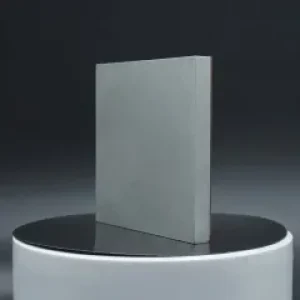Overview of Aluminum Steel Clad Plate
Aluminum steel clad plate is a clad material with high strength and good toughness. Its appearance greatly improves the bearing capacity and seismic performance of buildings. Aluminum has low density, high plasticity, corrosion resistance, easy processing, wear resistance, and electrical conductivity. In contrast, steel has high strength, good plasticity and toughness, and good economy, but it is not corrosion-resistant. Aluminum steel clad plates are a combination of the two materials—a material that combines advantages.
Features of Aluminum Steel Clad Plate
Light weight: The weight of the aluminum steel clad plate is only about 1/3 of the traditional pure aluminum plate, so it can greatly reduce the load of the building and reduce the structural cost.
Corrosion resistance: The surface of the aluminum steel clad plate has good corrosion resistance, which can effectively prevent the erosion of buildings by corrosive gases such as acid rain and salt spray.
High strength: Aluminum steel clad plates have very high strength and can be made into various structural parts or parts with complex shapes, uneven thickness and large loads.
High-temperature resistance: Aluminum steel clad plates can withstand high temperatures up to 1000 ° C, so they are very useful in many high temperature applications.
Wear resistance: The wear resistance of aluminum steel clad plates is very good, it can effectively reduce friction, reduce wear and prolong the service life of buildings.
Fatigue resistance: Due to the low elastic modulus and good toughness (elongation greater than 25%) of the aluminum/steel clad plate, it has good shock resistance and has a good absorption effect on impact loads.
Applications of Aluminum Steel Clad Plate
Aluminum steel-clad plates have been widely used in construction, aviation, transportation, electronics, medical, and other fields. Specific applications include:
Construction: Aluminum steel clad plates can be used for building exterior walls, interior partitions, stair railings, door and window frames, etc, due to their light weight, corrosion resistance, high strength, high temperature resistance, wear resistance, fatigue resistance, and good self-lubricating properties
Aviation: Aluminum steel clad plates are an important structural material for aircraft, rockets, and other aircraft. Due to their lightness, high strength, high temperature resistance, and corrosion resistance, they can improve aircraft load capacity and safety.
Transportation: Aluminum/steel clad plates can be used to manufacture automobile bodies, railway carriages, ship decks, rolling stock, aviation equipment, etc. Due to their light weight, high strength, and corrosion resistance, they can improve the load-carrying capacity and safety.
Medical aspects: Aluminum steel clad plates can be used to manufacture medical device shells, such as medical beds, medical carts, operating tables, etc. Due to their lightweight, high strength, and corrosion resistance, they can improve service life and safety.
Grade of Aluminum Steel Clad Plate
1A97, 1A93, 1A90, 1A85, 1070, 1060, 5083, Q235B, CCSB, Q245R, Q345R, 15CrMoR, 16Mn,20MnMO, 15CrMo, 109MnNiDR, 16MnD, 09MnNiD
Standard of Aluminum Steel Clad Plate
GBT 8546-2007
Package of Aluminum Steel Clad Plate
According to product characteristics and customer needs.
Remark of Aluminum Steel Clad Plate
Please provide detailed technical requirements to facilitate communication and determine the solution.
Payment Methods of Aluminum Steel Clad Plate
L/C, T/T, Western Union, Paypal, Credit Card etc.
Shipment of Aluminum Steel Clad Plate
It could be shipped by sea, by air, or by reveal ASAP as soon as repayment receipt.
FAQ
Question: What are the advantages of aluminum-steel composite panels compared to pure aluminum panels and pure steel panels?
Answer: Aluminum-steel composite panels have the advantages of aluminum and steel. It combines the lightness and corrosion resistance of aluminum with the strength and toughness of steel. Compared with pure aluminum plate, it is stronger; compared with pure steel plate, it is lighter and corrosion-resistant.
Question: What is the manufacturing process of aluminum-steel composite panels?
Answer: The production process mainly includes pretreatment, compounding, heat treatment and other steps. Pretreatment involves cleaning and surface treatment of aluminum plates and steel plates; during the composite process, the two materials are closely combined through a specific process; heat treatment further improves the performance of the composite plates.
Question: What is the strength of aluminum-steel composite panels?
Answer: Aluminum-steel composite panels have high strength, mainly due to the existence of the steel layer. At the same time, the composite structure of aluminum and steel also enhances the overall strength of the panel.
Question: What is the corrosion resistance of aluminum-steel composite panels?
Answer: Aluminum-steel composite panels have good corrosion resistance, and the aluminum layer can effectively resist erosion by corrosive media. However, the specific corrosion resistance also depends on factors such as the thickness of the aluminum layer, alloy composition and surface treatment.
Question: Can aluminum-steel composite panels be welded?
Answer: Yes, aluminum-steel composite panels can be welded. However, it should be noted that due to the different thermal expansion coefficients and melting points of aluminum and steel, appropriate welding processes and parameters need to be selected during welding to ensure welding quality.
Question: How to install and maintain aluminum-steel composite panels?
Answer: During installation, relevant installation guidelines should be followed to ensure that the board is flat and firmly fixed. In terms of maintenance, clean the surface regularly to avoid contact with corrosive substances, and repair damaged parts in time.





